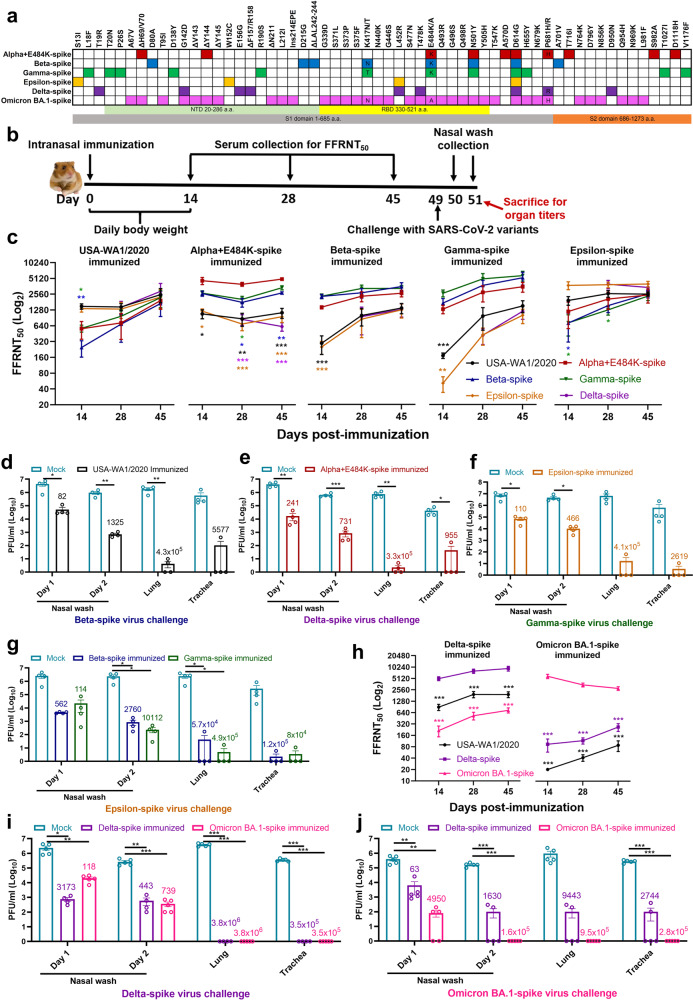Fig. 1.
Cross-neutralization and corss-protection among different SARS-CoV-2 variants in hamsters. a Amino acid substitutions in variant spikes. The spike sequence from USA-WA1/2020 strain was used as a reference. NTD N-terminal domain, RBD receptor-binding domain. b Experimental scheme. The hamsters (n = 4 or 5 per group) were intranasally immunized with WT or variant-spike SARS-CoV-2 (106 PFU). Serum NT50 values were measured on days 14, 28, and 45 post-infection. On day 49 post-infection, the hamsters were intranasally challenged by indicated variant-spike SARS-CoV-2 (104 PFU). The nasal washes (NW) were quantified for viral titers on days 1 and 2 post-challenge. Viral loads in lungs and trachaes were measured on day 2 post-challenge. c–g Cross-neutralization and corss-protection among Alpha, Beta, Gamma, Epsilon, or Delta. h–j Cross-neutralization and corss-protection between Delta and Omicron (BA.1). c, h Neutralizing titers of sera against variant spikes on days 14, 28, and 45 post-immunization. The values in the graph represent the mean ± standard error of mean. An unpaired two-tailed t test was used to determine significant differences between self-neutralization and cross-neutralization groups. P values were adjusted using the Bonferroni correction to account for multiple comparisons. Differences were considered significant if p < 0.01; p < 0.01, *; p < 0.002, **; and p < 0.0002, *** (c) or p < 0.025; p < 0.025, *; p < 0.005, **; and p < 0.0005, *** (h). d–g and i–j Cross-protection against heterologous spike variants. The non-immunized mock and immunized hamsters were challenged with selected variant spike viruses. The viral loads in nasal wash, lung, and trachea were quantified by plaque assays. The numbers above individual columns indicate the fold decrease in viral loads by comparing the means from the immunized group with that from the non-immunized group. Means ± standard errors of the mean are shown. An unpaired two-tailed t test was used to determine significant differences between mock and immunized groups. Differences were considered significant if p < 0.05; p < 0.05, *; p < 0.01, **; and p < 0.001, *** . d–f P values were adjusted using the Bonferroni correction to account for multiple comparisons. Differences were considered significant if p < 0.025; p < 0.025, *; p < 0.005, **; and p < 0.0005, *** (g, i–j)

